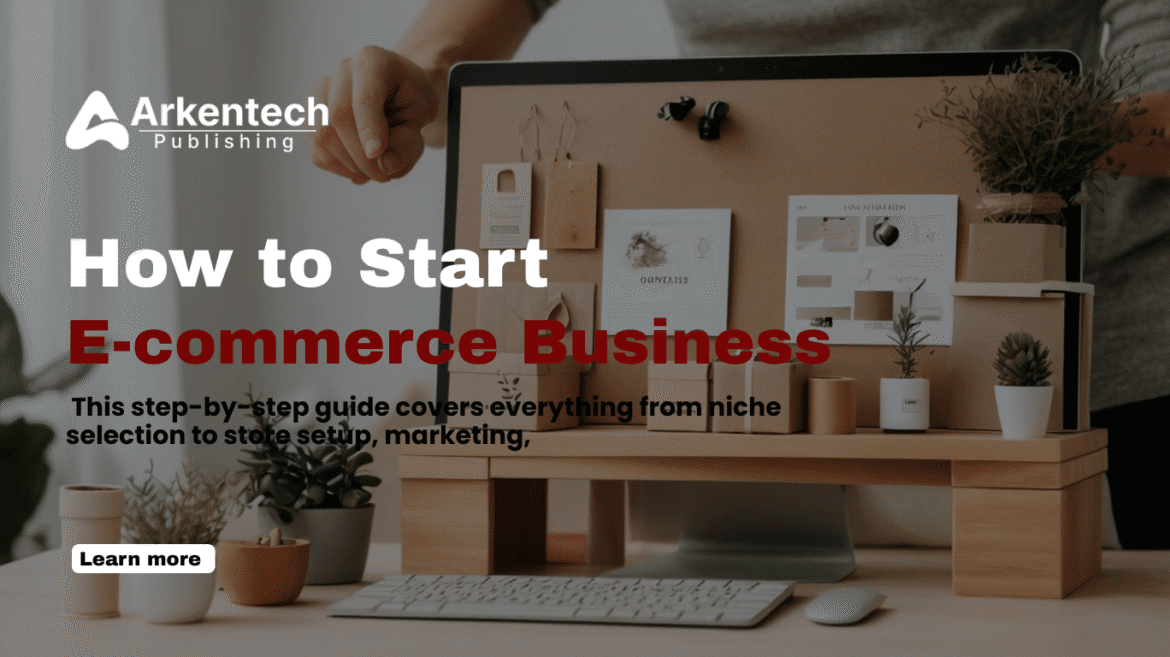Introduction
Starting an e-commerce business in 2025 is one of the smartest ways to enter the digital economy. Whether you want to create a side turn or build a full -time revenue flow, it is more accessible to launch the online store than ever. As global digital sales are growing rapidly, it is an ideal time to learn how to start an e-commerce business and benefit from growing online shopping trends.
Step 1: Choose Your E-commerce Niche
Before starting an e-commerce business, you can identify a profitable niche with strong consumer demand. A niche helps you focus your attention and attracts the right audience that is more likely to change. This makes your marketing effective in making long -term customers loyalty and brand identity in more targeted, cheap and competitive markets.
Tips to find the right niche:
- Solve a problem or complete a passion.
- Research using tools such as Google Trend, Semarsha or Amazon Bestseller.
- Check out the competition, but avoid translated markets.
- Look for repeated purchases or high margin products.
Step 2: Validate Product Ideas
Do not allow the product verification, as it is important for long -term success. Many start of e-commerce fails when launching the product’s demand or without confirming the public’s interest. To make sure you have a viewer ready to pay, which helps you avoid wasting time, energy and budget on the product that doesn’t work well in the market.
How to validate:
- Use examination or pole on social media.
- Set a destination page and run small PPC ads.
- Analyze customer reviews on competitive websites.
- Use Google Keyword Planner to check the monthly search volume.
Step 3: Choose a Business Model
Your business model will shape your operations and affect profitability. Understanding different e-commerce models helps you choose the one that matches your skills and business goals. It also determines inventory management, customer service structure and income capacity-if you start an e-commerce business, make it a basic alternative.
Popular e-commerce models include:
- Dropscripting: Low boot costs; You do not cope with the inventory.
- Print-on-Demand: Sell custom design on T-shirts, mugs etc.
- Wholesale or production: High control and gain margin, but also high advance costs.
- Membership boxes: Great for the construction of recurrent revenues.
Step 4: Register Your Business & Domain
To make your e-commerce store legal and reliable, you need to register your business properly and create a solid brand identity. The step creates reliability with customers and payment processors, and ensures compliance with regional laws and online transaction policies, which are crucial for permanent operation and trust building.
Steps to follow:
- Choose a commercial name that reflects your brand.
- Register the name and get the required license.
- Buy a domain name that matches your brand (eg brandname.com).
- Enter a commercial e -mail and payment account (bandage, papail, etc.).
Step 5: Build Your E-commerce Website
Now this is time to create your online store, which is the virtual store for your brand. Your site should be professional, mobile -friendly, fast loading and user -centric. This customer experience plays an important role in the SEO rankings, and how soon you change the site traffic to loyalty, pay to customers..
Popular platforms to consider:
- Shopify – Easiest for beginners.
- WOOCOMMERCE – Ideal for WordPress users.
- BigCommerce – Great for scaling operations.
- Wix or Squarespace budget friendly and beginner.
Focus:
- A clean, mobile -friendly design.
- Easy navigation and fast loading time.
- Explain CTA -er (buy now, add to the cart).
- Product images and high quality details.
Step 6: Set Up Logistics & Payments
- Success for e-commerce is necessary to succeed. to install:
- Shipping methods and prices (free shipping is a conversion amplifier).
- Return policy (clear and customer friendly).
- Tools or storage controls.
- More Safe Payment Gateway (Credit Card, PayPal, BNPL).
Step 7: Create a Marketing Strategy
No store can succeed without traffic and marketing.
Start with:
- SEO blogging: Write a key-rich article such as “How to Start E-Commerce Business”.
- Social media: Instagram, TIKTOK and PINTREST is e-commerce gold mine.
- E -Post Marketing: Capture heads with popup and nourishes them with a welcome series.
- Paid ads: Start Facebook or Google ad to test traffic and conversion.
- Build trust with user -related materials, reviews and admirers.
Step 8: Launch & Analyze Performance
You are ready to start your e-commerce business!
- Start a soft with family/friends for the answer.
- Track KPI as traffic, wagons, reversal and conversion using Google Analytics or Hotjar.
- Continue to optimize frequent product list and marketing tracts.
- Don’t forget to gather customers e -mail and reviews quickly.
Final Thoughts
Learning to start an e-commerce business should not be heavy or expensive. With the right strategy, mentality and equipment, anyone can launch a successful store online. The steps shared above give you a practical road map to follow the layout and marketing performance from the ideas verification to be followed.
As several consumers prefer digital shopping, it has never been a better time to create their own online store. Stay consistent, keep data inspection and continue learning from the analysis and customer response. Building Trust, which provides value and processing of your proposals, will ensure long-term success in today’s competing e-commerce environment. Your e-commerce tour starts with a single step that takes it today and shapes your digital future.
sitejabber.com sitejabber.com pin.it pin.it pin.it pin.it pin.it pin.it qr.ae qr.ae qr.ae ghostblogge22.blogspot.com
